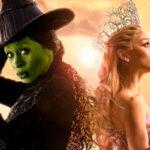

Since its release in 1960, “Psycho,” directed by Alfred Hitchcock, has been an icon of suspense and horror cinema, leaving an indelible mark on the history of film. With its compelling plot, complex characters, and surprising twists, the film continues to fascinate and intrigue audiences to this day. In addition to its gripping narrative, “Psycho” is filled with curiosities that help explain its lasting impact and its position as one of the greatest films ever made. In this text, we will explore some of these curiosities, delving into the behind-the-scenes of the production and the creative choices that have made “Psycho” a masterpiece of cinematic suspense.
1 – BASED ON ED GEIN AND A BOOK
The cinematic work was adapted from the literary work “Psycho,” written by Robert Bloch, who drew inspiration from Ed Gein, a serial killer from Wisconsin. Alfred Hitchcock acquired the rights to the book anonymously, paying only $9,500, and it is speculated that he also purchased many copies of the book to preserve the secret of the film’s ending.
2 – HITCHCOCK FACED SEVERAL REJECTIONS
Initially, Hitchcock’s proposal was rejected by Paramount Pictures, which even refused to acquire the rights to Bloch’s book. After completing the script and facing further rejections from Paramount, Hitchcock chose to finance the project himself, with Paramount solely responsible for distribution. Filming took place at Universal-International, with the Shamley Productions team. This marked Alfred Hitchcock’s final collaboration with Paramount Pictures.
3 – HITCHCOCK FORGOED HIS SALARY TO MAKE THE FILM
The filmmaker was so determined to bring the film to fruition that he waived his usual salary of $250,000, opting instead to receive 60% of the film’s gross revenue. Paramount, anticipating a weak box office performance, agreed to this condition. Hitchcock’s personal earnings from the film exceeded $15 million. Adjusted for inflation, this amount would be just over $120 million in 2016.
4 – JUSTIFICATION FOR THE FILM BEING BLACK AND WHITE
One of Alfred Hitchcock’s justifications for filming the feature in black and white was his concern that the use of color would make the film overly bloody. However, the main reason was his intention to keep costs as low as possible. He also pondered the success of low-quality black and white films and questioned the outcome if a good and economical film in the same aesthetic were produced. The outcome exceeded his expectations: with a budget of $806,947, “Psycho” grossed $50 million at the worldwide box office.
5 – OATH
At the onset of the project, on the first day of filming, both the cast and crew were asked to raise their right hands and swear to maintain total secrecy about the plot. Alfred Hitchcock also kept the conclusion of the film under strict wraps until the eve of filming.
6 – HITCHCOCK THREATENED THOSE WHO SPOILED
The zeal to keep the film’s plot under wraps extended to its screening in theaters: only those who arrived before the start of the film were admitted into the auditorium. At screening venues, a cardboard cutout of Alfred Hitchcock pointing to his wristwatch was installed in the lobby, accompanied by a warning that read: “The manager of this theater has been instructed, under penalty of death, not to admit anyone after the film has begun. Any attempt to enter by side doors, fire escapes, or ventilation ducts will be met with force.
The purpose of this extraordinary policy is evidently to ensure a more intense experience of ‘Psycho’ for you.”
On the walls of the cinemas, there were also posters stating: “no one, absolutely no one, will be admitted into the theater after the beginning of each ‘Psycho’ screening session.”
7 – THE ICONIC SOUNDTRACK
The director was so impressed with Bernard Herrmann’s soundtrack that he decided to double the composer’s salary to $34,501. Hitchcock later commented, “Thirty-three percent of the impact of Psycho is due to the music.” It’s interesting to note that the famous shower scene, arguably the most memorable in the film, was initially conceived to be completely silent. It was only after Hitchcock heard Herrmann’s composition that he changed his mind.
8 – CHOICE OF COLORS FOR MARION’S BRA
In the opening scene, Marion Crane is depicted wearing a white bra, a choice made by Alfred Hitchcock to portray her as “angelic.” After the theft of the money, in the subsequent scene, she is shown wearing a black bra, symbolizing her wrongful and malicious actions. Similarly, before the theft, she carries a white purse, but after the act, her purse is black.
9 – SPECIAL SHOWER
To capture the shower scene, Hitchcock had a special shower installed, with a diameter of nearly two meters. The central jets were blocked, and the water was directed in such a way that it did not hit the camera recording the scene.
10 – THE BLOOD
The blood that appears in the shower scene is actually chocolate syrup.
“Psycho” is more than an iconic suspense film; it’s a treasure trove of fascinating curiosities that reveal the meticulously planned details by Alfred Hitchcock to create a cinematic masterpiece. From the choice of costume colors to the manipulation of the soundtrack and the ingenious shower scene, each element contributes to the film’s unique and captivating atmosphere. The lasting legacy of “Psycho” extends beyond its influence on the suspense genre, but also to the ongoing fascination it evokes in viewers as they unravel its secrets and nuances. By delving into these curiosities, we are reminded not only of Hitchcock’s genius as a director but also of the magic and complexity that pervade this cinematic gem.








